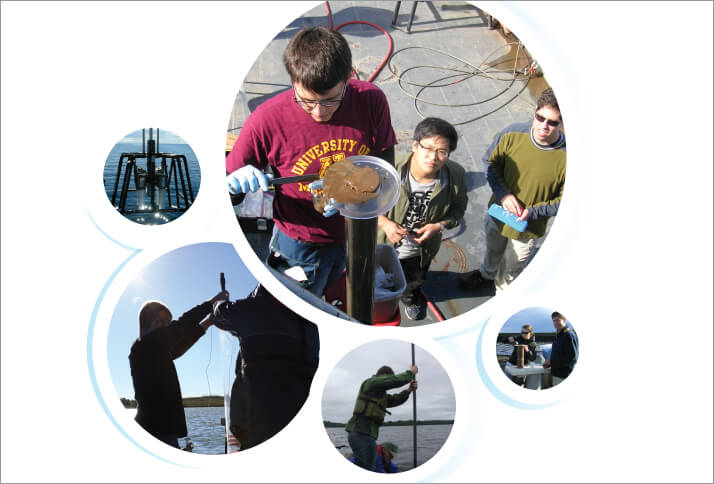Antibacterial soaps are marketed as preventing us from passing harmful germs to one another – they are generally accepted as a ‘good thing’. Triclosan is a common antibacterial agent, but the US FDA “does not have evidence that triclosan added to antibacterial soaps and body washes provides extra health benefits over soap and water”.
Antibacterial soaps are marketed as preventing us from passing harmful germs to one another – they are generally accepted as a ‘good thing’. Triclosan is a common antibacterial agent, but the US FDA “does not have evidence that triclosan added to antibacterial soaps and body washes provides extra health benefits over soap and water”. Futile scrubbing is no great issue. But what if common antibacterial agents, such as triclosan, are having a detrimental environmental impact on the water cycle? To gather information that could help toxicologists, regulators and the public evaluate any risk, researchers at University of Minnesota examined the historical exposure of aquatic systems to triclosan, chlorinated triclosan derivatives, and the four dioxin congeners (polychlorinated dibenzo-p-dioxins) that arise from the photolysis of triclosan (and its derivatives). William Arnold, a civil engineering professor in the College of Science and Engineering and the study's lead author, told The Analytical Scientist: “We also wanted to look at the overall dioxin trends to determine if the four targeted dioxin congeners were, in fact, the result of triclosan releases.” The team studied sediment cores of a meter in length from eight lakes across Minnesota that had different levels of exposure to treated wastewater. The cores were freeze dried, spiked with C-13-labeled triclosan, and subjected to accelerated solvent extraction. The subsequent clean-up steps proved to be a major challenge, depending on the organic content of the sediment sample. “Extracts from low organic sediments could be cleaned up with silica gel. The ‘dirtier’ extracts had to be diluted into water, solid phase-extracted, eluted, and then run through silica gel,” says Arnold. The team used an Agilent 1100 capillary LC with a Finnigan TSQ Quantum Discover MAX MS-Q3 tandem mass spectrometer, which allowed them to look for transitions that were specific to triclosan and its chlorinated derivatives. For the dioxins, Pace Analytical Services used high-resolution gas chromatography–high-resolution mass spectrometry, following a modified version of US EPA Method 1613B. The analysis showed that all four dioxin congeners arise from photolysis of triclosan and its three chlorinated derivatives. Current levels of triclosan are site dependent but are in the 1–100 ng/g sediment range. Chlorinated triclosan derivatives are 100–2000 pg/g, and the 2,8-DCDD 40-6000 pg/g. In terms of accumulation, triclosan rates are currently 0.5–12 ng/cm2 year. For 2,8-DCDD, accumulation rates range from 2 to 750 pg/cm2 per year.

Though the study is centered on Minnesota, the findings should be relevant to other freshwater bodies receiving treated wastewater effluent. The major implication is that when triclosan is washed down the drain, it is not completely removed by treatment processes, with a fraction of it winding up in lakes or rivers potentially distant from the point of use. Potential impacts of triclosan and its derivatives on environment health are an area of exploration, but triclosan is known to affect the function of algal communities at environmentally observed levels. The effects of these dioxins are currently unknown. Arnold concludes, “We are looking at other sites, and we are also looking at other compounds that are structurally similar to triclosan, which could also be dioxin precursors.” Perhaps it’s time we all started thinking a little more carefully about what gets washed down the sink, especially if the chemicals in question have no real benefit beyond marketing spin.
C. T. Anger et al., “Quantification of Triclosan, Chlorinated Triclosan Derivatives, and their Dioxin Photoproducts in Lacustrine Sediment Cores”, Environ. Sci. Technol., 47 (4), 1833–1843 (2013).




